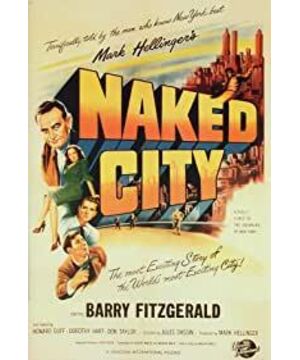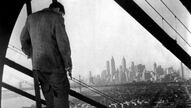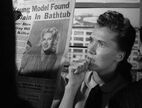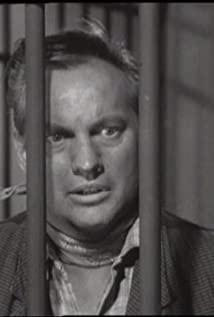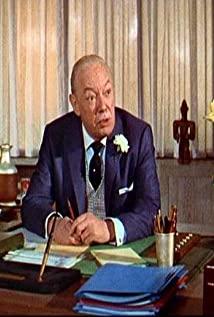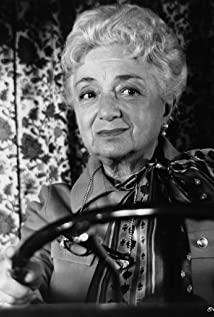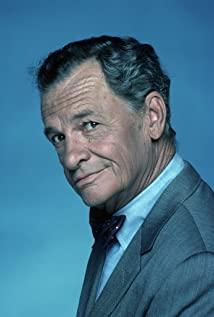The first is the image of the protagonist, the sheriff. Not only does this man possess the good qualities common to exemplary sheriffs: sharp-eyed, thoughtful, and experienced. At the same time, the attitude is kind, humorous, and the actor's short stature and body features with a puffed mouth (some people vividly describe him as a Popeye without a pipe), which makes it different from the wisdom and courage in traditional genre films. There is a clear distinction in the image of the sheriff. However, although the old sheriff is the No. 1 star in the film, his brilliance is concentrated in the work of the case. His family background, children, hobbies, etc. are not mentioned at all. For his assistants, Dassin was much more generous. More than once, the camera has focused on his happy family: a beautiful wife, two lovely children (one is ready to ride a bicycle, the other is a crying baby). A fledgling and obviously inexperienced young police officer who already has such a "rich" family life? This is really rare in the creation of characters in the same type of film. Is it just a coincidence, or is it the director's intention? Not sure. But in any case, the rather innovative character setting brings a good comedy effect to the film.
And their opponent, the culprit of the murder, even though he was an agile ex-professional wrestler, he had a hobby of playing the harmonica. The combination of a brutal nature and a taste for gentleness creates a strong rift that makes this villain, who doesn't really appear until the end of the film, suddenly comes alive. And the plot design that uses the habitual characteristics of murder as a breakthrough point in detecting cases is also somewhat Hitchcock-like. However, Dassin did not highlight the dramatic effect of discovering the real murderer with his help, but focused on the difficulty of the police finding nothing after a needle in a haystack inspection with a realistic approach.
A handsome suspect who is very attractive to women, with sufficient alibi, coupled with the support of a beautiful girlfriend with big eyes (beautiful intuition is often the most accurate), once made the audience have some kind of empathy, unconsciously thinking that He may really be an "innocent man" again. But when the truth finally came out, everyone was pulled back from illusory expectations: handsome guys in real life are really not a good thing! And this unsmiling guy also has a cell of alternative humor. At the first police station hearing, his lies emerged one after another, and then they were all exposed one by one. In the end, when the old detective said, "I have dealt with cases for so many years, I have met so many suspects, but I have never seen a liar as persistent as you", I believe that many viewers will inevitably laugh.
Like many classic and old films, the series of tricks have also become an important carrier for the display of humorous style. The old lady who went to the police station to provide information had such a serious narcissism that the two detectives couldn't help laughing during the conversation; and the neurotic who turned himself in after being ignorant of the murder process made them laugh and cry. Even the reserved maid, Daxin did not forget to tease: after hearing a few perfunctory flattery words after his hair was stolen, he believed that the old sheriff seemed to have a little interest in him.
The ending of the film doesn't have much to offer in terms of drama. Facing the police encirclement on all sides, the strength of the enemy and us is disparate, and the desperate murderer climbed the iron bridge tower. There is no suspense about his final fate. However, some of the anti-climax closing paragraphs are given a new look by Japanese film critics' excellent writing. The text is excerpted below:
...a scene from "The City That Never Sleeps": A prisoner chased by the police has nowhere to go and climbs the railings of the Great Iron Bridge. The camera now follows the prisoner upwards. The prisoner who climbed to the designated spot suddenly looked down, and a tennis ball came into view. Director Shinoda Masahiro said this after watching this scene: "Boys and girls are playing tennis. A white line on the tennis court suddenly appeared behind the prisoner who was trying to escape. I couldn't help being surprised. I wondered why the movie This unreasonable situation must be filmed. This part cannot be written in the script. In the scenes we filmed in the past, the prisoner climbing the iron bridge was treated as a scene, and it is different from other things outside the scene. There will be connections. The tennis court that emerges from behind the prisoner, in a sense, may mean the complexity of our world. Juxtaposing the criminal, the tennis player, and the chaser in this way, then It won't make a lot of sense, but if you look at it like I just said, it will be completely different. Because if you really take people as objects and describe them through storylines, you will find that the art of film can be Peeking into a very irrational world in the smallest details. I don't think even Dassin himself thought to shoot a tennis court. This tennis court, through the fact of crime in our peaceful environment, tells people that our A peaceful environment is submerged in what a chaotic and unreasonable world." Shinoda discovered the role of image in surprise. ...
In fact, the speaker has no intention and the listener has a heart. A favorite of veteran film critics. Because the more white space the director leaves, the more room for their borrowing to play. As for "the peaceful environment is submerged in what a chaotic and unreasonable world", I think of an example of "the speaker also has a heart". In "Murderous", the hero's girlfriend was tricked into the house by murder, and the camera then consciously retreated at a slow speed and finally stopped on the opposite side of the street. And at that moment, the quiet residential buildings and the streets with people passing through in the picture, combined with the ongoing murder that the audience cannot witness, does it also show a very similar feeling?
View more about The Naked City reviews


